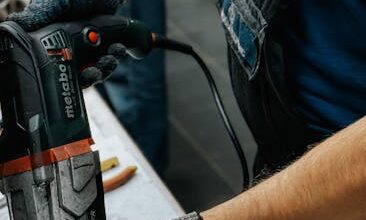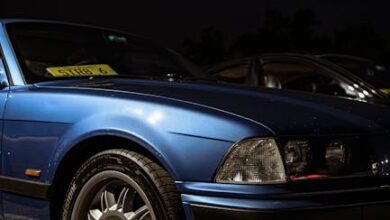The Dawn of Canva’s Own Design Model: Beyond Integration

Remember when Canva was just that friendly, drag-and-drop tool that helped you whip up a quick social media graphic or a sleek presentation? It was the democratization of design, making visual communication accessible to everyone, regardless of their artistic prowess. Fast forward to today, and Canva isn’t just growing; it’s evolving into something far more sophisticated, a true powerhouse at the intersection of creativity and artificial intelligence. The recent announcements from the design giant are a clear testament to this ambition, particularly with the launch of its own design model and a suite of impressive new AI features.
This isn’t just about adding a few AI bells and whistles. We’re talking about a strategic shift that could fundamentally redefine how we approach design, making complex creative tasks more intuitive, efficient, and, dare I say, magical. It’s a bold move that positions Canva not just as a design tool, but as a comprehensive creative ecosystem ready to tackle everything from everyday social posts to professional-grade projects.
The Dawn of Canva’s Own Design Model: Beyond Integration
For a while now, many platforms have integrated third-party AI tools, layering them onto existing functionalities. This has been useful, no doubt. But Canva is taking a different path, venturing into the realm of developing its *own* proprietary design model. This is a significant departure, much like a tech company building its own custom chip instead of relying solely on off-the-shelf components.
What does this mean in practical terms? Firstly, it implies a deeper, more seamless integration of AI into the very fabric of Canva’s platform. Instead of disparate tools, we can expect a more cohesive and intuitive user experience where AI isn’t just an add-on but an intrinsic part of the design process. Imagine an AI that truly understands design principles within Canva’s unique environment, generating suggestions and alterations that are perfectly aligned with the platform’s aesthetic and user flow.
This proprietary model also grants Canva greater control over the quality, consistency, and unique creative outputs of its AI features. It allows them to fine-tune the AI specifically for visual design, leading to more relevant and higher-quality results. It’s about developing an AI that speaks Canva’s language, understands its users, and can evolve with the platform’s vision, rather than being limited by external constraints.
For me, this move signals Canva’s growing maturity. It’s no longer just an aggregator of tools; it’s becoming an innovator in core AI technology for design. This level of investment and development puts Canva in a different league, directly challenging the established players who have traditionally dominated professional creative software.
A Flood of New AI-Powered Features: Empowering Every Creator
With its new design model as the backbone, Canva is rolling out a remarkable array of AI-powered features designed to streamline workflows and unleash creativity. These aren’t just flashy gimmicks; they’re genuinely useful tools aimed at making design more accessible and efficient for everyone, from small business owners to seasoned marketers.
Think about the time saved with features like advanced AI image generation, where a simple text prompt can conjure up stunning visuals tailored to your needs. Or the ‘Magic Write’ functionality, which can draft compelling copy for your marketing materials, social posts, or even a blog introduction. These tools aren’t just generating content; they’re acting as intelligent co-pilots, helping you overcome creative blocks and accelerate your output.
Streamlining Everyday Design: Forms and Email Magic
The beauty of these new AI capabilities really shines when you consider practical applications. Take, for instance, the new `Forms` and `email design` features. Crafting an effective online form can be surprisingly complex, requiring careful consideration of layout, user experience, and visual appeal. With Canva’s AI, you could describe the purpose of your form, and the AI might suggest optimal structures, eye-catching themes, and even relevant question types, all in a matter of seconds.
Similarly, designing engaging emails that look good across various devices and email clients is a notorious headache for many. Canva’s AI can now step in, helping you generate professional-looking email templates, suggest compelling subject lines, and even adapt your designs for different screen sizes. Imagine needing a quick promotional email for a flash sale: the AI could draft the body, suggest imagery, and format it perfectly, saving hours of tedious work. This kind of intelligent automation is a game-changer for anyone managing a business or a brand online.
It’s about making sure your message looks polished and professional, effortlessly. This democratizes not just design, but also effective digital communication, which is crucial in today’s visually saturated world.
The Affinity Acquisition: Elevating Canva’s Professional Game
Beyond the impressive strides in AI, another strategic move that underscores Canva’s ambition is its recent acquisition of Affinity. While some may have interpreted this broadly, the strategic intent is undeniably clear: Canva is not just catering to casual users anymore; it’s making a serious play for the professional creative market.
Affinity, developed by Serif, is a suite of award-winning creative software known for its robust vector graphics editor (Affinity Designer), photo editor (Affinity Photo), and desktop publishing application (Affinity Publisher). These are tools that directly compete with industry standards like Adobe Photoshop, Illustrator, and InDesign, offering advanced functionalities preferred by graphic designers, photographers, and illustrators.
By bringing Affinity into its ecosystem, Canva is explicitly signaling its intent to offer a complete, end-to-end solution for creatives at all levels. It’s about bridging the gap between quick, accessible design and the demanding requirements of professional creative work. While the integration details and accessibility strategies are still evolving, the move itself is a statement. It means that a designer who starts with a simple Canva template can, theoretically, transition to high-fidelity, pixel-perfect editing within the same overarching creative environment, without needing to jump between disparate platforms.
This acquisition isn’t just about adding new features; it’s about expanding Canva’s entire identity. It positions the platform as a comprehensive creative hub capable of handling intricate vector illustrations, detailed photo manipulations, and sophisticated layout designs, alongside its popular drag-and-drop simplicity. It’s an exciting prospect for the future of professional design tools, making high-end capabilities potentially more integrated and accessible to a wider audience.
What This Means for the Future of Design
Canva’s evolution, spearheaded by its proprietary design model, advanced AI features, and strategic acquisitions like Affinity, marks a pivotal moment in the digital design landscape. It’s a strong indicator that the future of design is inherently intelligent, automated, and deeply integrated. We’re moving towards a world where creative tools don’t just execute commands but genuinely assist, suggest, and even anticipate our design needs.
For individuals and businesses, this means lower barriers to entry for professional-quality design, empowering more people to tell their stories visually. For seasoned designers, it offers powerful new ways to automate mundane tasks, freeing up time for more conceptual and truly creative work. Canva is no longer just a trendsetter; it’s becoming a foundational pillar in the creative technology space, continuously pushing the boundaries of what’s possible when human intuition meets artificial intelligence. It’s an exciting time to be a creator, with an increasingly smart and collaborative canvas at our fingertips.





